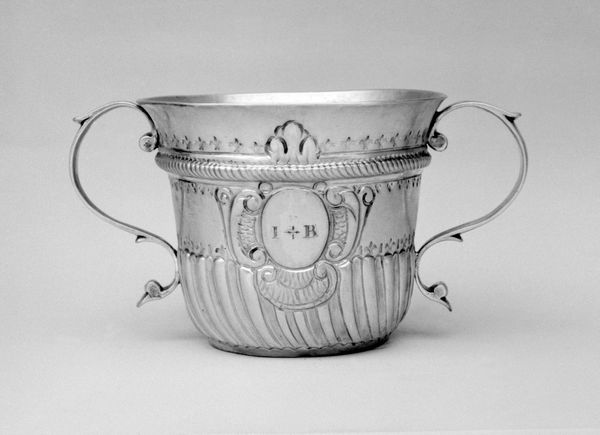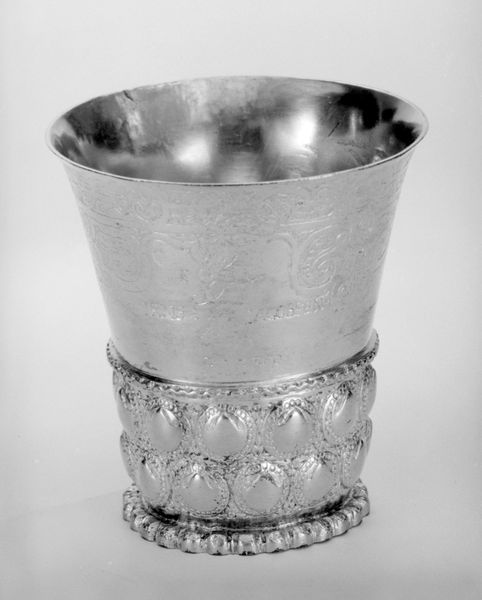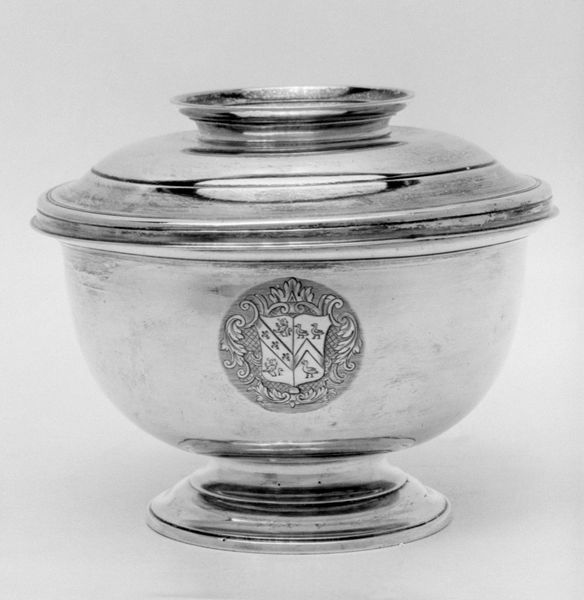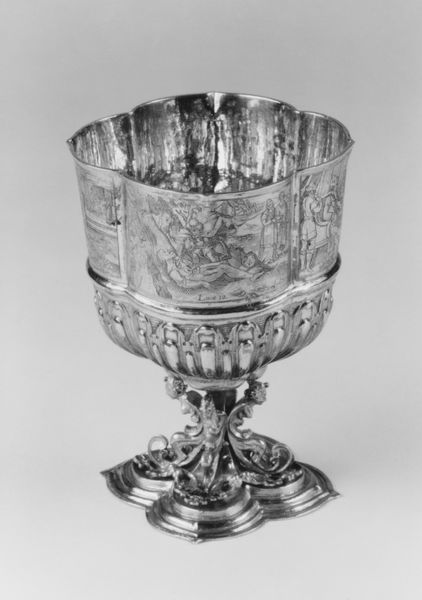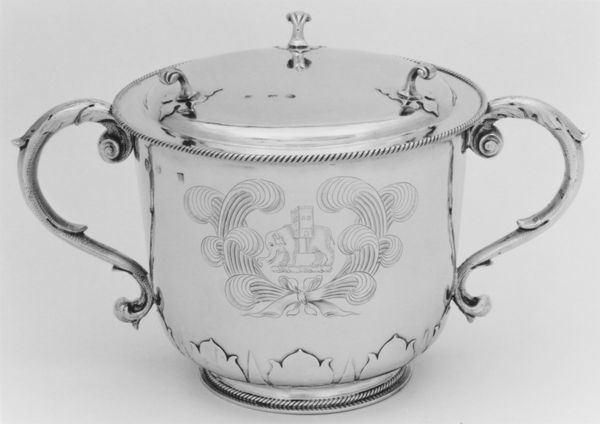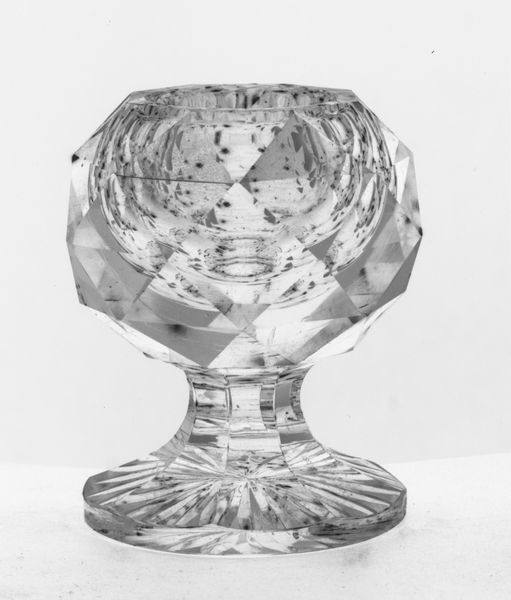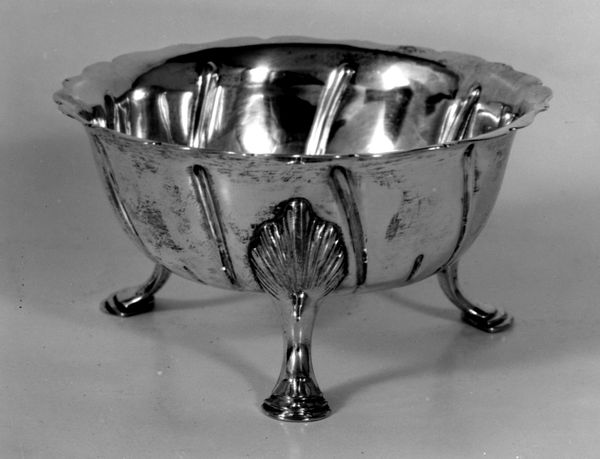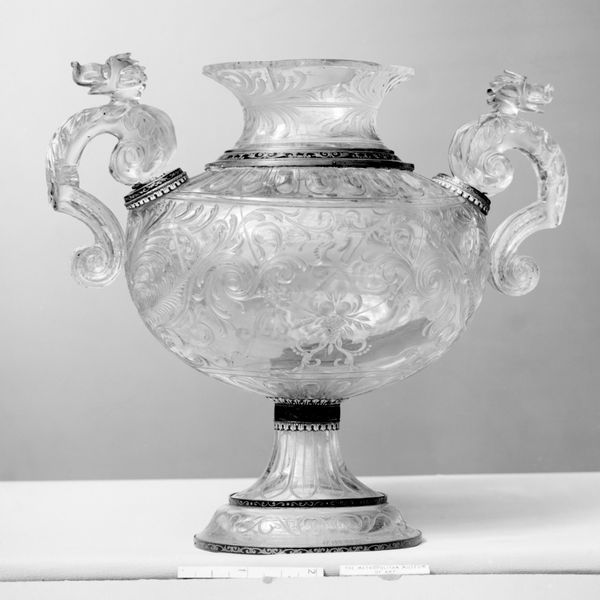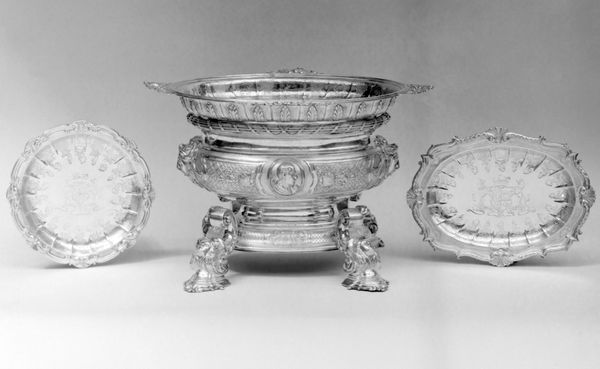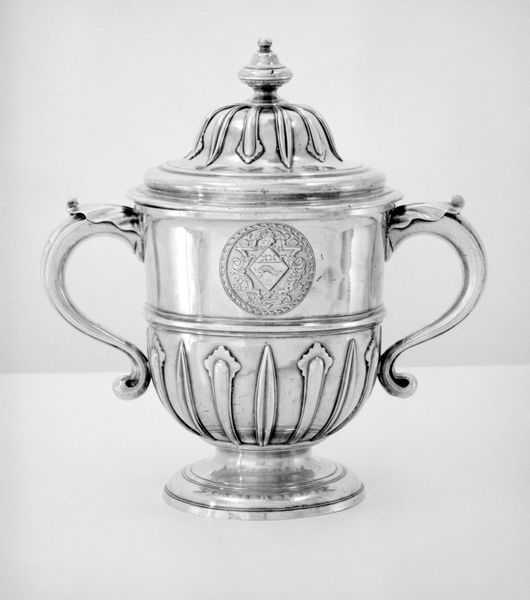
silver, metal, sculpture
#
silver
#
baroque
#
metal
#
sculpture
#
decorative-art
Dimensions: each: 2 × 3 in. (5.1 × 7.6 cm)
Copyright: Public Domain
Curator: Well, hello there. Today we're observing a "Set of four saltcellars," crafted sometime between 1730 and 1740 by the skilled silversmith, Paul de Lamerie. The medium, of course, is silver. They're currently held at the Metropolitan Museum of Art. Editor: They strike me as both precious and faintly menacing. Look at those lion’s paw feet supporting the bowl. There is something overtly Baroque about this piece. Curator: Indeed, they exemplify the Baroque style in decorative art. The patronage system influenced designs; often objects reflected the wealth and status of their owners. Editor: It's clear these were not meant for the average table! The labor involved – hammering, casting, chasing – the sheer amount of skilled work is astonishing, especially considering silver's malleability. Do we know anything about the artisan? Curator: Paul de Lamerie was a Huguenot who fled France for England, becoming one of the most celebrated silversmiths of his era. His work was highly sought after by the wealthy elite, and his success highlights the opportunities and impact of immigrant artisans in 18th-century London. Editor: That history, of course, adds another layer of meaning. The consumption of salt, even then, was so intrinsically tied to trade routes and systems of labor. Even though, at the moment, salt has seemingly no connection to Baroque artwork... Curator: Right! The coat of arms is meticulously engraved, a signifier of its owner’s social position. Each component communicates a visual narrative. The lions are the main symbol for strength and royalty. Editor: But notice how even with such rigid symbolism, the silversmith manages to work expressiveness into the individual forms, the curve of the lion's mane, the delicate beading around the rim. They highlight how individual craft brings materials to life in distinctive ways. Curator: They bring the stories behind material creation together. And those kinds of narratives bring history to life! Editor: It reminds us that the artistry involved transcends mere function; it's about how human skill interacts with inherent qualities of the materials themselves to make meaning, really.
Comments
No comments
Be the first to comment and join the conversation on the ultimate creative platform.

